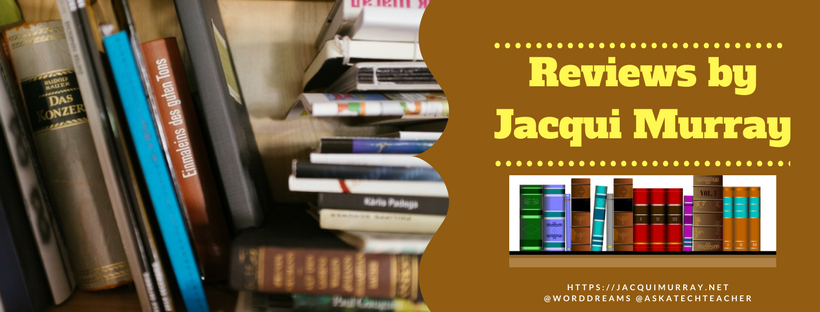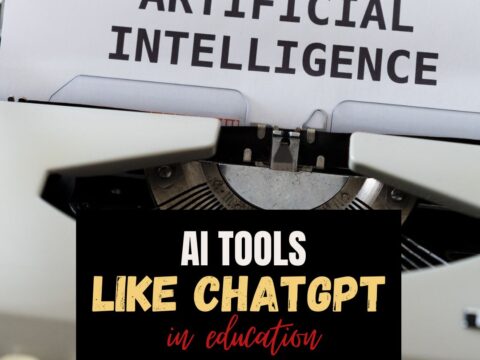 In my school, every teacher assesses writing. Even in the tech lab, which is my purview, I provide mini-how-to-write lessons before tech projects that include writing. That’s not just for essays or reports but slideshows, blog posts, comments in forums, and more. I remind students of the five-paragraph essay, synonyms, plan-revise-edit-rewrite, persuasive essays, letter writing, or whatever fits the day’s lesson.
In my school, every teacher assesses writing. Even in the tech lab, which is my purview, I provide mini-how-to-write lessons before tech projects that include writing. That’s not just for essays or reports but slideshows, blog posts, comments in forums, and more. I remind students of the five-paragraph essay, synonyms, plan-revise-edit-rewrite, persuasive essays, letter writing, or whatever fits the day’s lesson.
This connected teaching approach is consistent with most modern pedagogy. Writing is no longer treated as a stand-alone skill, rather a tool students use to provide evidence of their knowledge. If I use Common Core as an example, here’s what these Standards call out as important about writing (slightly rephrased from the Anchor Standards):
- Write arguments to support claims in an analysis of substantive topics using valid reasoning and relevant and sufficient evidence.
- Write informative/explanatory texts to examine complex ideas clearly and accurately through the effective selection, organization, and analysis of content.
- Write narratives to develop experiences using effective techniques, well-chosen details, and well-structured event sequences.
- Produce clear and coherent writing in which the development, organization, and style are appropriate to task, purpose, and audience.
- Develop and strengthen writing as needed by planning, revising, editing, rewriting, or trying a new approach.
- Use technology to produce and publish writing.
- Conduct research based on focused questions that demonstrate understanding of the subject.
- Gather relevant information, assess the credibility and accuracy of each source, and integrate the information while avoiding plagiarism.
- Draw evidence from literary or informational texts to support analysis, reflection, and research.
- Write routinely for a range of tasks, purposes, and audiences.
Note that nowhere do the Standards mention handwriting, word processing tools, editing typos, or general technology skills. Why? Because achieving the Standards transcends the media with which you write. Whether that’s paper-and-pencil or word processing, audio, comics, or video, the goal is to communicate ideas.
Knowing what we discussed about the Standards’ expectations of accomplished writers, here’s a list of what shouldn’t be assessed when grading writing:
- handwriting: Usually, handwriting is taught in a class that’s separate from ‘writing’ or ‘literacy’. By fourth grade (or sooner, or later), teachers no longer grade the fine points of handwriting. Whether the student’s skill level is novice or master, it doesn’t matter because soon — by fifth grade probably — handwriting is replaced by digital writing.
- skill with a word processing tool: Students start using writing apps by kindergarten. They type their name, a word, maybe even a sentence. These skills are part of their knowledge base for word processing. As each school year passes, students are expected to share more and more of their homework and classwork using some form of digital writing. That skillset shouldn’t be confused with writing skills. The student may be a weak typist but an excellent communicator. Address these separately.
- ability to catch typos: Even excellent typists make typos. Don’t let keyboarding errors affect a writing grade. You may assess keyboarding as a separate skill, deducting from the final grade for each mistake, but don’t blend that into the writing grade.
- skill with technology: If a writing project requires a student create a digital timeline, trifold, or poster, don’t assess how well they blend colors, use tools, or mash up apps. That’s a separate skill. You want to only assess how well they communicate ideas.
If you’re pushing back with the argument, “If I can’t read their handwriting, I won’t find evidence of their knowledge” or “They have so many typos, I can’t follow the flow of their ideas” then by all means add a separate grade for these skills. You’re right — they are important, just not a lens on student writing expertise. Here’s what you can do to address those:
- make sure students have the tech skills required to digitally write. This includes:
- keyboarding
- editing
- formatting
- scrolling up and down pages
- drag-and-drop
- highlighting
- copy-paste
- understanding tools and toolbars
- saving/printing
- make sure they know all common word processing skills. Do they always use one word processing program like Word, but their online writing requires another, like Google Docs? Introduce them to multiple programs so they see the similarities and are able to decode nuances.
- let them use the tech tool they are most comfortable with to address your goals. If they can “examine and convey complex ideas and information” with a comic, let them. But do put the burden on them to convince you that their method will work.
By mentally removing the detractors that obfuscate good writing and providing students with the tools they require to communicate in the manner best suited to them, writing assessment becomes more authentic, granular, dynamic, and personalized.
Jacqui Murray has been teaching K-18 technology for 30 years. She is the editor/author of over a hundred tech ed resources including a K-12 technology curriculum, K-8 keyboard curriculum, K-8 Digital Citizenship curriculum. She is an adjunct professor in tech ed, Master Teacher, webmaster for four blogs, an Amazon Vine Voice, CSTA presentation reviewer, freelance journalist on tech ed topics, contributor to NEA Today, and author of the tech thrillers, To Hunt a Sub and Twenty-four Days. You can find her resources at Structured Learning.




































